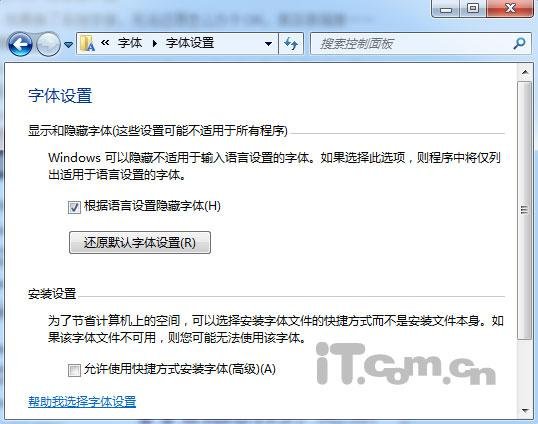NASA drills freaky scenario where elusive asteroid heads towards Earth
What if,关键字2 in 14 years, a newly-discovered asteroid was likely to strike Earth?
But that's not all.This threatening space rock, some 330 to 1,050 feet in diameter (or 100 to 320 meters), has just disappeared behind the sun, making crucial observations impossible for the next seven months.
To prepare for such an unsettling scenario, NASA just completed an exercise to "inform and assess our ability as a nation to respond effectively to the threat of a potentially hazardous asteroid or comet." A possible asteroid or comet collision can pose a number of uncertainties, which the space agency continued to test during the recent fifth Planetary Defense Interagency Tabletop Exercise.
You May Also Like
"A large asteroid impact is potentially the only natural disaster humanity has the technology to predict years in advance and take action to prevent," Lindley Johnson, NASA's planetary defense officer emeritus, said in a statement.
SEE ALSO: NASA scientist viewed first Voyager images. What he saw gave him chills.Importantly, there are no known asteroids on a collision course with Earth for at least 100 years, and the chances of a major impact in our lifetimes is extremely small, astronomers say. Planetary defense agencies have never needed to raise an alarm about a threatening impact — though you've undoubtedly seen sensationalized news about menacing asteroids over the years.
"We have never actually issued a warning," Johnson previously told Mashable. (But they have informed the public about what some asteroids of interest are doing.)
"We have never actually issued a warning."
But, at some point, an impact is inevitable. "Yes, asteroids have hit Earth over the course of its history, and it will happen again," NASA notes.
In the latest asteroid collision scenario, the space agency presented a hypothetical object some 330 to 1,050 feet across that has a 72 percent chance of walloping Earth. Something in that range, while not nearly the biggest class of asteroid, could be hugely destructive. Take the 600-foot-deep "Meteor Crater," which landed in present-day Arizona 50,000 years ago. The culprit was likely some 100 to 170 feet across, but created a blast big enough to destroy Kansas City.
As the hypothetical trajectory below shows, this asteroid passes over some densely populated areas like Dallas, which would almost certainly create a national emergency, even if the exact trajectory is uncertain. The scenario's impact is expected in 14 years, in July 2038, giving countries a relatively short time to prepare — especially with a seven month gap in surveillance. From initial observations, the object's size, composition, and trajectory are uncertain.
"To complicate this year’s hypothetical scenario, essential follow-up observations would have to be delayed for at least seven months — a critical loss of time — as the asteroid passed behind the Sun as seen from Earth’s vantage point in space," the space agency said.
 A hypothetical asteroid impact scenario created for the Planetary Defense Interagency Tabletop Exercise. Credit: NASA
A hypothetical asteroid impact scenario created for the Planetary Defense Interagency Tabletop Exercise. Credit: NASA  A slide from the Planetary Defense Interagency Tabletop Exercise showing courses of action for contending with a likely impact. Credit: Planetary Defense Interagency Tabletop Exercise
A slide from the Planetary Defense Interagency Tabletop Exercise showing courses of action for contending with a likely impact. Credit: Planetary Defense Interagency Tabletop Exercise This latest planetary defense exercise underscores how critical near-Earth object surveillance is (these are objects that come within some 30 million miles of Earth's orbit around the sun). Fourteen years is a rushed timeline.
"You need to know what's coming, when it's coming, and how hard it's going to hit," Eric Christensen, the director of the NEO-seeking Catalina Sky Survey in Arizona, previously told Mashable.
Related Stories
- NASA spacecraft spots dead robot on Mars surface
- Astronomers just witnessed a whole galaxy 'turn on the lights' in real-time
- The best telescopes for gazing at stars and solar eclipses in 2024
- The mega-comet hurtling through our solar system is 85, yes 85, miles wide
- The first images of Earth are chilling
"You need to know what's coming, when it's coming, and how hard it's going to hit."
Among the courses of action discussed by NASA, FEMA, and other partners included a flyby of the incoming object, which would vastly improve our grasp of its composition, rotation, speed, and beyond. Will it break apart into smaller pieces in Earth's atmosphere? Is it rubble-like, or solid? How likely is it to hit the ocean? Also discussed was the major operation, a "Purpose-Built Rendezvous," which implies using a spacecraft to deflect an object.
Asteroid deflection is a realistic future possibility. In 2022, NASA plunged a refrigerator-sized spacecraft into a stadium-sized asteroid, with hopes of simply nudgingit. It was an unprecedented, successful test — proving humanity could alter the path of a menacing asteroid, should one ever be headed our way. The impact cut the asteroid Dimorphos' loop around its parent asteroid (they journey around the sun as a pair, or binary system) by a whopping 33 minutes and 15 seconds — when the original goal was to change it by at least 73 seconds.
 Participants at the fifth Planetary Defense Interagency Tabletop Exercise. Credit: NASA / JHU-APL / Ed Whitman
Participants at the fifth Planetary Defense Interagency Tabletop Exercise. Credit: NASA / JHU-APL / Ed Whitman Ultimately, this latest tabletop impact exercise resulted in a number of "High-level Takeaways." A glaring problem is the uncertainties involved in planning for a likely impact. The participants recommended developing "the capability to rapidly launch an NEO [near-Earth object] reconnaissance mission," which could include repurposing existing spacecraft.
Thankfully, NASA and its planetary defense partners will continue exercising hypothetical asteroid threats. It behooves us to be prepared, even if the overall risk is low.
The risks of an asteroid impact
Here are today's general risks from asteroids or comets both tiny, and very large. (Importantly, even relatively small rocks are still threatening, as the surprise 56-foot (17-meter) rock that exploded over Russia and blew out people's windows in 2013, proved.
Every single day about 100 tons of dust and sand-sized particles fall through Earth's atmosphere and promptly burn up.
Every year, on average, an "automobile-sized asteroid" plummets through our sky and explodes, explains NASA.
Impacts by objects around 460 feet in diameter occur every 10,000 to 20,000 years.
A "dinosaur-killing" impact from a rock perhaps a half-mile across or larger happens on 100-million-year timescales.
(责任编辑:火王)
 Best vacuum deal: Save 25% on the Shark Clean & Empty at Amazon
Best vacuum deal: Save 25% on the Shark Clean & Empty at Amazon Windows 7系统默认字体还原技巧
Windows 7系统默认字体还原技巧 人工智能将给制造业带来什么,全球制造业的大咖在这个行业大会上热议……
人工智能将给制造业带来什么,全球制造业的大咖在这个行业大会上热议…… How CPUs are Designed, Part 3: Building the Chip
How CPUs are Designed, Part 3: Building the Chip 四年没被发现 开发者揭秘《瑞奇与叮当》隐藏小游戏
四年没被发现 开发者揭秘《瑞奇与叮当》隐藏小游戏
- Best robot vacuum deal: Get the Dreame L10s for 33% off at Amazon
- How CPUs are Designed, Part 3: Building the Chip
- HFS·时尚体育节2022青岛斗腕公开赛 00后小将倪清阳冲击冠军惜败赵子瑞
- Winter storm warnings: How to see online if more snow is heading your way
- 电竞选手枯草直播回应手机争议
- 日本福岛县近海时隔4年再次发现放射物超标的鱼类
- Face the Cold in Call of Duty: Mobile Season 11 — Winter War 2
- 传奇SF中的职业对比:为何法师最为辛劳?
-
 王奥芊中)庆祝胜利 本版图片 新华社 “只要她敢传,我就敢下手。”赛场上的果敢化作6扣6中的惊艳数据,未满18岁的王奥芊在赛后采访中,谈及与二传张籽萱的配合,回答沉稳老练,与赛场上果断凌厉的作风如出一
...[详细]
王奥芊中)庆祝胜利 本版图片 新华社 “只要她敢传,我就敢下手。”赛场上的果敢化作6扣6中的惊艳数据,未满18岁的王奥芊在赛后采访中,谈及与二传张籽萱的配合,回答沉稳老练,与赛场上果断凌厉的作风如出一
...[详细]
-
 葡萄牙再夺欧国联冠军北京时间6月10日,胜负彩第25086期开奖结果揭晓。本期一等奖开出21,427注,单注奖金677元。值得注意的是,由于本期足彩开出“火锅奖”,一等奖单注低至677元,在足彩开奖历
...[详细]
葡萄牙再夺欧国联冠军北京时间6月10日,胜负彩第25086期开奖结果揭晓。本期一等奖开出21,427注,单注奖金677元。值得注意的是,由于本期足彩开出“火锅奖”,一等奖单注低至677元,在足彩开奖历
...[详细]
-
Preview all the updates coming to iPad this fall
 Apple announced a ton of new features at its annual Worldwide Developers Conference, including perso
...[详细]
Apple announced a ton of new features at its annual Worldwide Developers Conference, including perso
...[详细]
-
 在当今社会,随着全球气候变化的影响日益凸显,从极端天气事件到生态系统的失衡,我们比任何时候都更需要采取切实可行的措施来减少碳足迹并保护环境。而垃圾分类,作为一项简单却有效的日常实践,正逐渐成为抗击气
...[详细]
在当今社会,随着全球气候变化的影响日益凸显,从极端天气事件到生态系统的失衡,我们比任何时候都更需要采取切实可行的措施来减少碳足迹并保护环境。而垃圾分类,作为一项简单却有效的日常实践,正逐渐成为抗击气
...[详细]
-
 原料:香菇根(也就是香菇脚) 150g、生抽2茶匙10ml)、盐一小撮、孜然粉 1.5小勺约2g)、辣椒粉 1小勺约2g)、色拉油2茶匙10ml) 、香菜碎一点点。做法:1、平时做香菇菜时,摘下的香菇
...[详细]
原料:香菇根(也就是香菇脚) 150g、生抽2茶匙10ml)、盐一小撮、孜然粉 1.5小勺约2g)、辣椒粉 1小勺约2g)、色拉油2茶匙10ml) 、香菜碎一点点。做法:1、平时做香菇菜时,摘下的香菇
...[详细]
-
Simone Biles claps back at Riley Gaines over transgender athlete comments in women's sports debate
 A heated exchange between Olympic gymnastics champion Simone Biles and former NCAA swimmer Riley Gai
...[详细]
A heated exchange between Olympic gymnastics champion Simone Biles and former NCAA swimmer Riley Gai
...[详细]
-
สภาพอากาศกรุงเทพฯ ทุ่มนี้ ไม่มีกลุ่มฝน อุณหภูมิ 31 องศาฯ
 ศูนย์ป้องกันน้ำท่วม กรุงเทพมหานคร รายงานสภาพอากาศกรุงเทพมหานคร วันที่ 10 มิถุนายน 2568 เวลา 19.00 น.
...[详细]
ศูนย์ป้องกันน้ำท่วม กรุงเทพมหานคร รายงานสภาพอากาศกรุงเทพมหานคร วันที่ 10 มิถุนายน 2568 เวลา 19.00 น.
...[详细]
-
![五年级的作文[集锦10篇]](http://n.sinaimg.cn/news/transform/w600h400/20180308/NFfX-fxpwyhv9590857.jpg?zdy) 在平平淡淡的学习、工作、生活中,大家最不陌生的就是作文了吧,作文是人们以书面形式表情达意的言语活动。还是对作文一筹莫展吗?下面是小编整理的五年级的作文10篇,仅供参考,希望能够帮助到大家。五年级的作文
...[详细]
在平平淡淡的学习、工作、生活中,大家最不陌生的就是作文了吧,作文是人们以书面形式表情达意的言语活动。还是对作文一筹莫展吗?下面是小编整理的五年级的作文10篇,仅供参考,希望能够帮助到大家。五年级的作文
...[详细]
-
 “每次看到影视剧里某主角因得了白血病就放弃治疗,我都着急死了。白血病是可以治疗的,那个人为什么不去做移植?等我退休了,若能拉到投资,我会考虑去拍一部电影,不能老是让不懂医学的编剧乱科普!”南方医科大学
...[详细]
“每次看到影视剧里某主角因得了白血病就放弃治疗,我都着急死了。白血病是可以治疗的,那个人为什么不去做移植?等我退休了,若能拉到投资,我会考虑去拍一部电影,不能老是让不懂医学的编剧乱科普!”南方医科大学
...[详细]
-
 副标题:《热血传奇》反外挂升级,玩家齐心协力守护游戏环境《热血传奇》作为深受玩家喜爱的经典游戏,一直致力于为玩家提供一个公平、纯净的游戏环境。然而,近日却有个别玩家利用恶意外挂破坏游戏平衡,严重影响其
...[详细]
副标题:《热血传奇》反外挂升级,玩家齐心协力守护游戏环境《热血传奇》作为深受玩家喜爱的经典游戏,一直致力于为玩家提供一个公平、纯净的游戏环境。然而,近日却有个别玩家利用恶意外挂破坏游戏平衡,严重影响其
...[详细]


